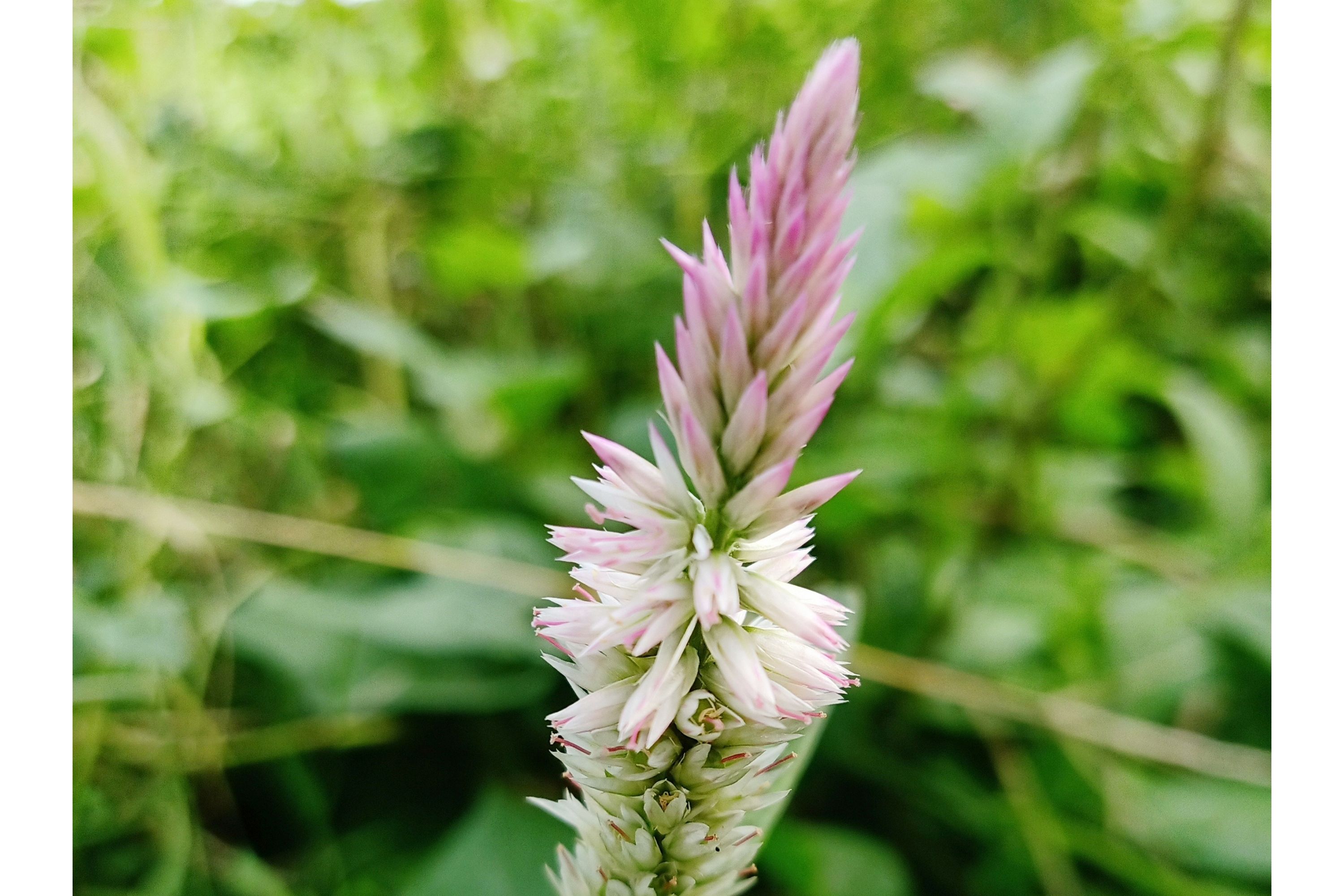Plumed cockscomb
(Celosia argentea)

Description
Celosia argentea is a beautiful and unique plant species that belongs to the Amaranthaceae family. This plant is commonly known as silver cockscomb or plumed cockscomb due to its unique and stunning appearance. It is native to tropical regions of Asia, Africa, and South America and is widely grown as an ornamental plant worldwide. In this article, we will explore the characteristics, cultivation, and uses of Celosia argentea. Description Celosia argentea is a herbaceous annual plant that grows up to 90cm in height. Its stem is erect, branching, and often purple or red in color. The leaves of this plant are alternate, simple, and ovate to lanceolate in shape, measuring up to 15cm long and 8cm wide. The leaf margins are serrated, and the surface of the leaf is usually glabrous or slightly hairy. One of the most distinctive features of Celosia argentea is its inflorescence. The flowers are small, inconspicuous, and arranged in dense, compact, and brightly colored heads, which can measure up to 30cm long and 20cm wide. The flower heads can be red, orange, pink, yellow, or purple in color, and they have a velvety texture. The plumed cockscomb has a unique, feathery appearance, which is why it is often grown as an ornamental plant. Cultivation Celosia argentea is an easy-to-grow plant that requires little care. It is best grown in full sun or partial shade, and it prefers well-drained soil with a pH range of 6.0 to 7.5. The plant is highly adaptable and can tolerate a wide range of soil types, including clay, loam, and sandy soils. The plumed cockscomb can be propagated by seeds or cuttings. Seeds can be sown directly into the soil in spring, or they can be started indoors in late winter and transplanted outside after the last frost. The plant can also be propagated by stem cuttings, which should be taken in the summer and rooted in moist soil. Celosia argentea requires regular watering, especially during dry spells. However, overwatering should be avoided, as this can lead to root rot. The plant is relatively pest-resistant, but it may be susceptible to aphids, spider mites, and whiteflies. Propagation Celosia argentea can be propagated through both seeds and stem cuttings. Seeds: The most common method of propagation for Celosia argentea is through seeds. Seeds can be obtained from the plant itself or purchased from a seed supplier. Sow the seeds directly into the soil after the last frost, about 1 cm deep and spaced about 30 cm apart. It is important to ensure the soil remains moist during the germination period, which typically takes 7-14 days. Once the seedlings are large enough to handle, they can be thinned or transplanted to their final location, ensuring they are planted in well-drained soil and in full sun to partial shade. Stem cuttings: Celosia argentea can also be propagated through stem cuttings taken in the spring or summer. Choose healthy stems from the plant and cut them into 5-10 cm pieces. Remove the leaves from the bottom half of the stem and plant it in moist, well-drained soil. The cutting should be placed in a bright, warm location, but not in direct sunlight. Keep the soil moist and mist the cutting regularly to increase humidity. The cutting should root within 2-3 weeks and can be transplanted to its final location once it has established a strong root system. Uses Celosia argentea is primarily grown as an ornamental plant in gardens and as a cut flower. The plant's bright, colorful flowers make it a popular choice for adding color and interest to flower beds, borders, and containers. The flowers can also be cut and used in floral arrangements. In addition to its ornamental uses, Celosia argentea is also used in traditional medicine in many parts of the world. The plant has been used to treat a variety of ailments, including diarrhea, dysentery, and coughs. It is also believed to have anti-inflammatory and anti-microbial properties. Conservation Status According to the International Union for Conservation of Nature (IUCN), Celosia argentea is classified as a species of "Least Concern" in terms of its conservation status. This means that it is not currently facing any major threats that would cause significant declines in its population. However, it is important to note that the species is heavily cultivated and used as an ornamental plant, and as such, any impacts on its natural habitat or collection for trade could potentially impact its long-term survival. Additionally, as with many species, ongoing monitoring and conservation efforts are important to ensure the continued health of Celosia argentea populations in the wild. Conclusion Celosia argentea is a beautiful and versatile plant that is easy to grow and maintain. Its bright, colorful flowers make it a popular choice for adding interest and color to gardens and floral arrangements, and its traditional medicinal uses add to its value. Whether grown for its ornamental or medicinal properties, Celosia argentea is a valuable addition to any garden or floral arrangement.
Taxonomic tree:







